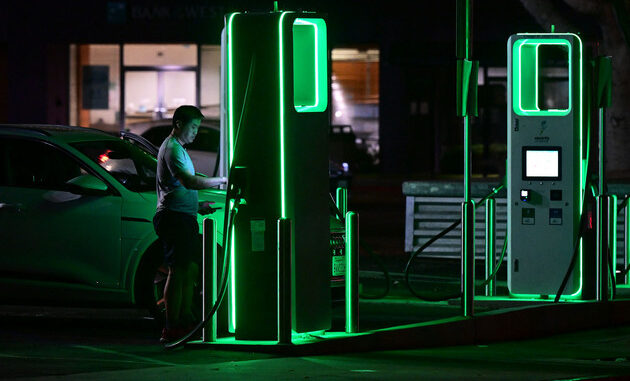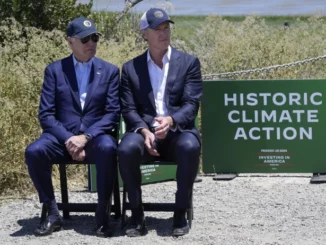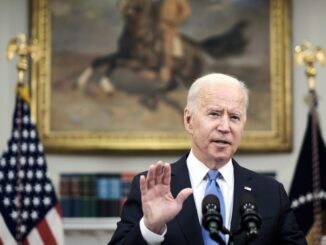
Congress at the urging of the Biden administration agreed in 2021 to spend $7.5 billion to build tens of thousands of electric vehicle chargers across the country, aiming to appease anxious drivers while tackling climate change.
Two years later, the program has yet to install a single charger.
States and the charger industry blame the delays mostly on the labyrinth of new contracting and performance requirements they have to navigate to receive federal funds. While federal officials have authorized more than $2 billion of the funds to be sent to states, fewer than half of states have even started to take bids from contractors to build the chargers — let alone begin construction.
Consumer demand for electric vehicles is rising in the United States, necessitating six times as many chargers on its roads by the end of the decade, according to federal estimates. But not a single charger funded by the bipartisan infrastructure law has come online and odds are they will not be able to start powering Americans’ vehicles until at least 2024.
Getting chargers up and running across the country is essential to reaching President Joe Biden’s goal of having half the vehicles sold in the United States be electric by the end of the decade — a key cog of his climate agenda. Americans consistently say the lack of charging infrastructure is one of the top reasons they won’t buy an electric car.
Republican opponents are now trying to shut down the administration’s efforts to build a charging network by choking off its funding. And the sluggish rollout could undermine Biden’s EV-themed reelection messaging and increase the possibility a Republican in the White House could roll back the charging network efforts in 2025.
“It has been frustrating to say the least,” Arcady Sosinov, founder and CEO of charging manufacturer FreeWire Technologies, said of the slow pace of the rollout.
Biden signed the bipartisan infrastructure package into law in 2021 with $7.5 billion specifically directed toward EV chargers, with an eye toward achieving his goal of building 500,000 chargers in the United States by 2030.
The United States has around 180,000 chargers today, according to the Energy Department. That includes 41,000 of the type of fast chargers that can alleviate the dreaded “range anxiety” of a long-distance road trip in an electric vehicle.
In a June study, the National Renewable Energy Laboratory projected the U.S. will need 1.2 million public chargers by 2030 to meet charging demand, including 182,000 fast chargers.
Administration officials insist the pace at which they are rolling out the infrastructure law’s charging funds is to be expected, given the difficulty of creating a brand-new program in every state and marshaling the private sector to meet complex reliability and performance requirements for each federally-funded station.
The goal is a reliable and standardized network in every corner of the nation, said Gabe Klein, executive director of the Joint Office of Energy and Transportation, which leads the federal government’s efforts on EV charging.
“You have to go slow to go fast,” Klein said in an interview. “These are things that take a little bit of time, but boy, when you’re done, it’s going to completely change the game.”
The bulk of the infrastructure law funds, $5 billion, are dedicated to building fast chargers along interstate highways under the National Electric Vehicle Infrastructure program. The program requires the chargers meet a strict set of standards, such as being built at least every 50 miles over major routes, being operational at least 97 percent of the time and featuring credit card readers for easy payment.
But Aatish Patel, president of charger manufacturer XCharge North America, is worried the delays in installing chargers are imperiling efforts to drive up EV adoption.
“As an EV driver, a charger being installed in two years isn’t really going to help me out now,” Patel said. “We’re in dire need of chargers here.”
GOP charges up its attacks
The pace of the rollout will likely mean that few federally-funded chargers will be in the ground by next year’s election. And Republican opponents of the vehicles have seized on the lack of charging infrastructure to attack Biden’s efforts to boost electric vehicles.
Former President Donald Trump has railed against subsidies for EVs and the infrastructure that powers them, arguing the market should dictate what type of car Americans drive. But he has also relentlessly attacked EVs for their range and the dearth of chargers — the issue Biden is aiming to solve with the infrastructure law funds.
“They say the happiest day when you buy an electric car is the first 10 minutes you’re driving it, and then after that, panic sets in because you’re worried, ‘Where the hell am I going to get a charge to keep this thing going?’” Trump said at a September rally with autoworkers in Michigan.
In the House in November, GOP lawmakers offered amendments to the transportation spending bill to strip funding from the charging programs created by the infrastructure law.
“Not only is such an endeavor not the federal government’s responsibility, this program doesn’t work, won’t work and will end up wasting massive amounts of federal money,” Rep. Harriet Hageman (R-Wyo.) argued on the House floor.
Her amendment to defund the NEVI program was soundly defeated, with 238 lawmakers from both parties voting against it. But the House adopted a separate amendment from Rep. Eric Burlison (R-Mo.) that would hollow out its sister program, the Charging and Fueling Infrastructure Grant Program, which provides $2.5 billion for chargers in rural areas and at community gathering points.
Administration officials say they aren’t concerned a future administration could try to roll back the program, pointing to enthusiasm for the funds from red state governors and the private sector alike.
Ohio Republican Gov. Mike DeWine, whose state broke ground on the nation’s first charger funded by the NEVI program in October, said in a statement that he is committed to “truly positioning Ohioans for the electric future.”
“This groundbreaking further demonstrates the state’s commitment to installing chargers as quickly as possible for the benefit of Ohio drivers,” DeWine said.
Under the infrastructure law, the NEVI funds are administered by states, which can contract out the construction and operation of the charging stations to private companies. So far, every state has taken the initial steps to receive the NEVI cash by submitting a plan to the Joint Office in 2022 and an update in 2023. But if a governor were to reject the funds, municipalities could apply to administer the funds instead.
“I’m probably more excited now … than I’ve been anytime since I took this job because everybody’s paddling in the right direction — purple state, blue state, red state,” Klein said. “Everybody’s seeing the impact of the investments.”
Following Ohio, Pennsylvania also broke ground on its first NEVI-funded charger in November. Another six states have awarded contracts for their first round of charging sites, while 15 states plus Puerto Rico are in the process of soliciting bids from the private sector.
But 27 states and D.C. have yet to even start soliciting bids, with some states like Missouri anticipating they may not post their solicitation until 2025. (Three of those states — Nevada, New York and Vermont — are procuring some federally-funded chargers outside of a public request for bids, but plan to solicit bids in the future.)
Even some states with high rates of EV adoption, like California and Washington, have yet to award any of their funds.
Sosinov noted, though, that design, engineering, installation and utility upgrades could extend the wait by years even after the contracts to build stations are awarded.
The other charging program created by the law, the Charging and Fueling Infrastructure Grant Program, has yet to allocate any funds, with the first awards expected by the end of the year.
The Biden administration is expecting a deluge of chargers funded by the law to break ground in early 2024. A senior administration official granted anonymity to speak on the specifics of the rollout said the pace is to be expected, given that the goal is to create a “convenient, affordable, reliable, made-in-America equitable network.”
“Anybody can throw a charger in the ground — that’s not that hard, it doesn’t take that long,” the official said. “Building a network is different.”
The administration insists it is doing all it can to speed up the process, including by streamlining federal permitting for EV chargers and providing technical assistance to states and companies through the Joint Office. It expects the U.S. to hit Biden’s 500,000 charger target four years early, in 2026, the official said.
It’s not clear, however, how many of those will be fast chargers. The NEVI program prioritizes building those types of chargers, especially in remote locations along interstate highways where it might not otherwise be profitable for a private company to build a charger.
‘Frustrating delays’ at the state level
The slow rollout of the NEVI program primarily boils down to the difficulties state agencies and charging companies face in meeting a complex set of contracting requirements and minimum operating standards for the federally-funded chargers, according to interviews with state and EV industry officials.
Jim McDonnell, director of engineering at the American Association of State Highway and Transportation Officials, which is assisting states in administering the federal charger funding, said the work of distributing the NEVI funds largely fell to state offices that had never worked on EV charging before.
“Considering it’s a brand new program and the minimal amount of background that a lot of the state DOTs had in EV infrastructure, procurement and deployment when we went into this, I’m thrilled how fast they’ve gotten things off the ground,” McDonnell said.
That’s shown in the states that have been early leaders in the program. Ohio was able to become the first state to break ground on a NEVI charger largely because it had completed years of planning and siting work for an EV network before the infrastructure law passed, said Preeti Choudhary, the executive director of DriveOhio, the state office administering the funds.
Charger manufacturers, meanwhile, have had to step up research and development to ensure their federally-funded chargers work 97 percent of the time, the new minimum standard intended to alleviate persistent reliability issues with America’s chargers. And they’ve had to invest in U.S. manufacturing facilities to meet new domestic sourcing requirements for the equipment.
All of that has slowed the process for states to open bidding to build chargers and for companies to place bids, said Patrick Murphy, who is leading the Vermont Agency of Transportation’s administration of the funds.
“This program has suffered from a number of frustrating delays and will still yet as industry tries to catch up to the rules that were put in place,” Murphy said. “But we also recognize that those rules will help shape the kind of consistent convenient national network that we need to grow EV adoption.”



